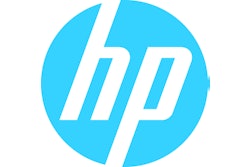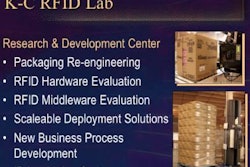Besides being a technology supplier to Wal-Mart as an RFID vendor, Hewlett-Packard also provides HP products to the mass merchandiser in cases and pallets that are RFID enabled.
“We have experience working with RFID deployment in our own supply chain, and we have experience running RFID pilots for other companies,” says Ulrich van der Meer, HP’s vice president, manufacturing industries.
As a RFID technology supplier to Wal-Mart, HP provides the retailer with a “turnkey” RFID infrastructure that includes “best of breed middleware,” according to Frank Lanza, HP’s director of RFID solutions, who has been with HP since 1977. Lanza spoke in March to select members of the press including RFID Antenna.
HP was one of the first eight companies to respond to Wal-Mart’s RFID compliance mandate in 2004, and now operates 26 RFID-enabled distribution centers.
Lanza said the idea of RFID is to improve product visibility in the HP’s own supply chain. RFID will permit HP to get a “better grasp of raw materials and improve our warehouse management,” he added. He noted that “95% of our middleware and integration is through OAT Systems.
HP on costs, payback
When asked about cost, Lanza said RFID tag prices would drop as volumes increase. HP’s last batch of RFID tags were procured at a cost of 22¢ apiece—and those were EPC 96-bit Generation 2 tags, Lanza claimed. Although those were passive UHF tags, he says the company is also looking at the use of active tags.
“We can eliminate manual inspections,” Lanza said, “and we can scan a pallet using RFID quicker than with a person manually scanning the bar code. The time savings are significant.”
Speaking at the RFID World conference in March, Ian Robertson, HP’s RFID program director, asked, “Why do RFID? For the money,” he answered. He told the audience that HP found value in RFID even before retailer mandates were announced. HP uses a “core team” of more than 20 people for its RFID efforts.
Robertson says that when HP first started its RFID program, in 2002, RFID tags had a 30 to 40% failure rate. Now, he says, that is down to under 1%. He’s confident HP will reach Six Sigma quality levels. HP has an even higher rate of success for (Class 1) tags that it writes. Said Robertson, “We have yet to fail to read a tag that we have successfully written.”
He said 2005 would be the year that HP moves RFID from its warehousing facilities into its manufacturing operations. The company also expects to expand its RFID-tagged cases from six products to 50 this year.
Technology hybrids
Lanza indicated that customers were asking HP about some sort of combination of RFID with GPS—Global Positioning Systems.
HP is already developing infrastructures it calls sentient environments. This would combine the object-tracking capabilities of RFID with sensors that can capture video images, sound movement, map location, 3-D location, temperature, humidity, and other environmental factors.
For more on HP and RFID, see RFID at HP: Update and advice, published in Packaging World.

























